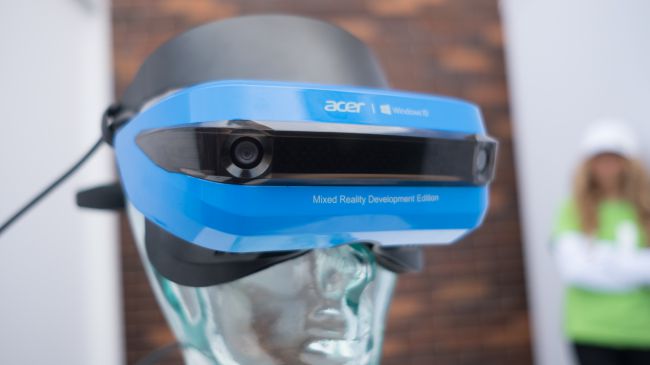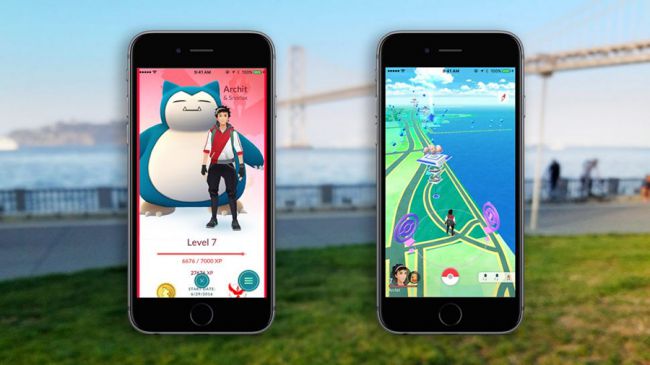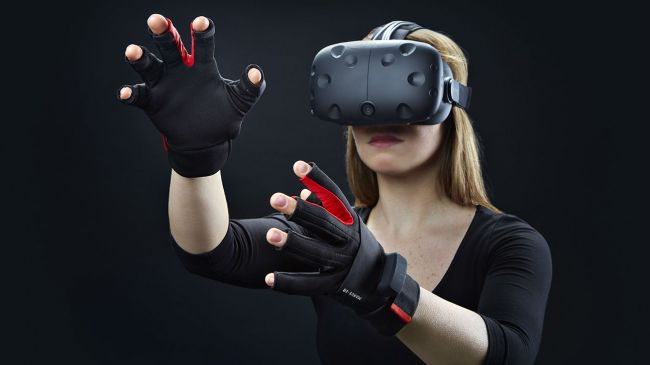Over the past few years we’ve experienced real world examples of how virtual reality (VR) technology can transform the way we live, work and play for the better. But many companies and industry analysts are now turning their attention to the possibilities of augmented reality (AR) or mixed reality (MR) as well.
In fact Tim Cook, the CEO of Apple, has been very vocal about the potential for AR to become even more popular and widespread than VR. “My own view is that augmented reality is the larger of the two, probably by far,” he told ABC News.
Although VR, AR and MR are loose terms that don’t always sit distinctly from each other when you try to define them, the general difference is that VR is often more focused on a virtual world, whereas AR and MR are often more focused on merging virtual and digital elements with real ones.
But again, there’s no hard and fast rule here because the industries are still so new. In fact the definitions have been called into question a lot recently after Acer launched a mixed reality headset that is just as much of a virtual reality headset,too.
As you might expect, there are many reasons why some think AR could soon trump VR, including the fact it’s already being used in popular mobile AR games (like Pokemon Go) and it’s often cheaper to get your hands on. But the fact AR is focussed on interacting with a digital world while simultaneously interacting with the real world means it also addresses some of the bigger concerns raised by virtual reality. For example, motion sickness is proving to be less of an issue and concerns raised by prolonged time spent immersed in virtual reality are likely to be lessened too.
That industry insiders expect AR to generate $85 to $90 billion in revenue within five years. Whereas VR is only expected to bring in $10 to $15 billion.
But despite a number of companies, like Microsoft, Dell and Asus pouring research and development in producing MR hardware, it’s not perfect yet. If AR is truly set to become bigger than VR, there are still some issues it’ll need to work on.

Content needs to keep you coming back for more
In a lot of the AR experiences we’ve got our hands on to date, the aim has been to ‘wow’ us. But we all know that there’s only so many times that’ll work. This means that if tech companies want users coming back for more they’ll have to up their game.
Luckily, many people have been using mobile AR apps for some time now, so it’s not about creating content for a completely new category, but consistency. And getting people hooked in an ethical way is still key.
Samantha Kingston, Client Director at VR content and event planning agency Virtual Umbrella, explained: “If you concentrate on the game side, I believe that we still are tackling the ‘normality’ of using AR as a medium. The ‘normality’ has come through things like snapchat and Pokemon go for the public so far.
“However for it to be used every day and consistently it’s down to creating content that really works with AR, not just because it’s a new and exciting medium.”
It’s not as if there are lots of AR companies doing this ‘wrong’ right now. But this concern points to a need for constant innovation and a good understanding of what gets people coming back for more time and time again.
Kingston believes a way forward might be to stop seeing VR and AR as siloed altogether.
“We shouldn’t afraid to put AR and VR in the same category. If you look at Merge, they started out by creating a VR headset and have now brought out the Merge Cube, which allows you to experience AR too. It’s a great example of a successful toolset that provides a range of uses,” she said.

Privacy issues need to be addressed and regulated
Important discussions about ownership and data are already rife in the tech industry right now. But these conversations, and the regulations that come from them, need to be translated into AR as well.
This will be particularly important if we’re going to see more and more always-on tech strapped to our faces soon, which will bring AR tech into all kinds of environments, from the operating room to a school, your office to your bedroom. This will mean tech companies will know more about you than ever before. So will they be able to use that data to suggest a new product you should buy based on what’s in your bathroom cabinet?
But not only is regulation important in this context to protect the user, but consent to protect everyone around them. Unlike VR, there’s a much higher probability that AR headsets will be ‘always-on’, which means how will you know whether someone wants to be filmed or involved in your MR adventure or not?
Advertising and the battle of the brands
Before you roll your eyes at the thought of advertisers pasting an ad to your bedroom wall, consider that there is a huge opportunity for brands in AR if the activations are executed well. For example, anything could become a media channel and brands could find out more about you then ever, tailoring experiences and making your life easier.
But for that to work there needs to be more transparency, lots of regulation and a big focus on quality content rather than making a quick buck. Although these may seem like concerns for the future rather than the present, it’s going to become increasingly important to have legislation in place sooner rather than later.

Considering real world safety
A very pressing and important issue when it comes to MR and AR is safety. We’re not talking about policing violence in virtual worlds or ensuring you don’t hurt your eyes when you’re wearing a headset (although they are two big challenges in their own right), but the boring considerations. Like are you going to trip over things when you can see a virtual dog in your very real living room? And if you do, will you blame the manufacturer or your own clumsiness?
Considering issues of injury and product liability now may not seem particularly sexy when there’s so much potential for MR to change healthcare and mix up education and take you on an otherworldly gaming adventure. But unless we consider where responsibility lies, how to educate users and how to keep everyone safe, they’re problems that are likely to come up time and time again, leaving users injured and tech companies out of pocket. After all, Pokemon Go users have already shown us that trying to ‘catch ‘em all’ can lead to serious injury, like the story of the two men who fell 90 feet into a ravine.
More inclusive and thoughtful development
When any kind of tech is developed, how it works and feels and integrates into your life is dictated by the team that creates it. It seems obvious, but if we venture into virtual worlds it’ll be more important than ever to ensure there’s a diverse team creating the content or it’s not likely to gain mainstream adoption.
Not only should content be as inclusive as possible, but it should also be thoughtful. It’s still early days for discussions about what happens to users psychologically when real worlds meet virtual ones.
In a paper called A Value Sensitive Design Approach to Augmented Reality, researchers Batya Friedman and Peter H. Kahn from the Dept. of Psychology at the University of Washington explained: “At times, augmented reality attempts to create a system such that the user cannot tell the difference between the real world and the augmentation of it. Yet, when all is said and done, and the technology is turned off, many users will want to know what was ‘real’ and what was ‘augmented computation.’
This raises concerns about how our minds are truly interpreting augmented reality. From there it’s not hard to imagine some of the bigger complications, like whether the inability to distinguish between ‘real’ and ‘virtual’ is just a short-term side effect we should make peace with or a much more serious, longer one. Furthermore, if you can’t distinguish what’s real and what’s not, widespread access to MR devices raises concerns about them getting into the wrong hands. Could they be used to manipulate people in the future in either advertising or for something more sinister?

There are so many things to think about and issues to address when it comes to delving into the worlds of AR, MR and VR, from bringing in more advertising regulation and developing tech that’ll be less of a strain on our eyes, through to deeper issues about how we can stop people from becoming addicted and address violence and manipulation in virtual worlds.
But in many ways, that’s totally to be expected. These are new breeds of tech without social context to keep us grounded, long-term research to keep us informed and a set of ethical guidelines to keep us safe.
Rather than fear the future, there’s a lot that needs to happen now. For starters, more time needs to go into research before products are rushed to market, there needs to be more transparent business models and tech companies need to take a big responsibility in the future.
But users need to also do their bit and educate themselves about the technology they’re using, from how to set it up in a safe way so they don’t faceplant the floor, through to how to ensure they’re looking after their minds and bodies in the long term.
This article was originally published by TechRadar.

